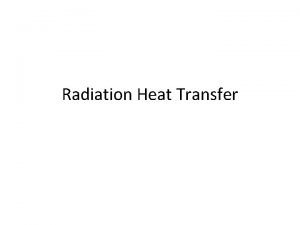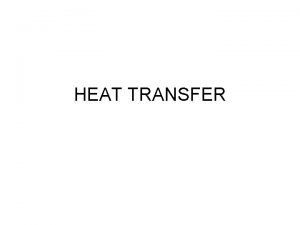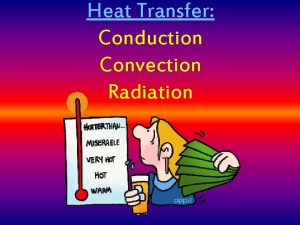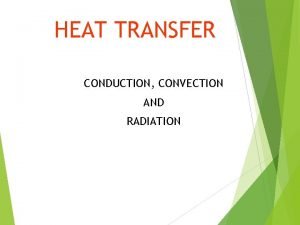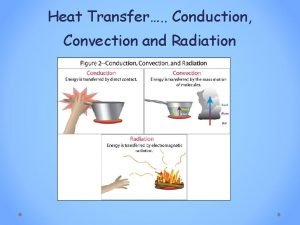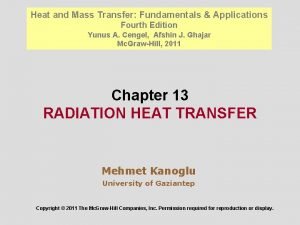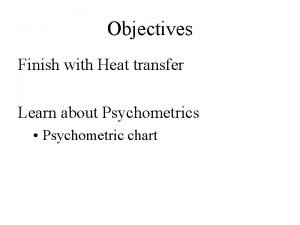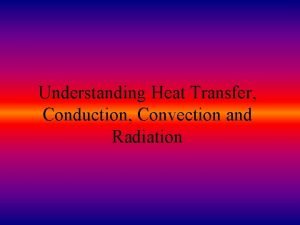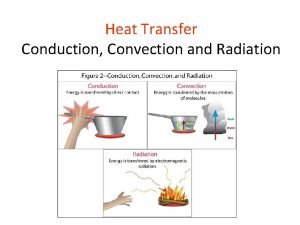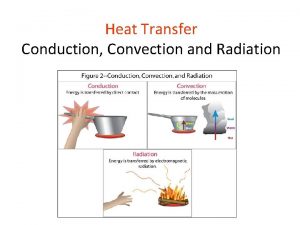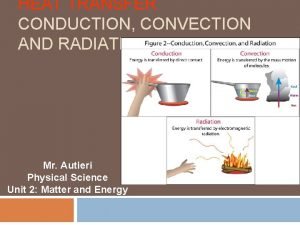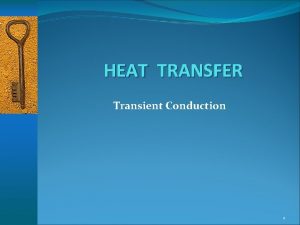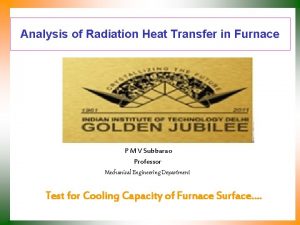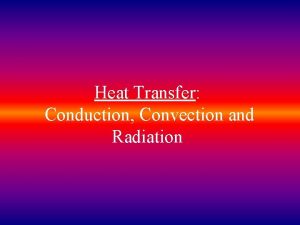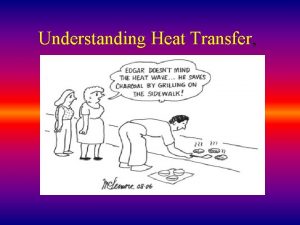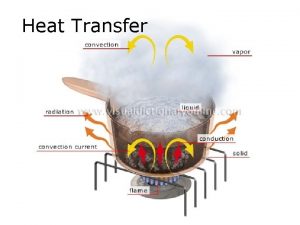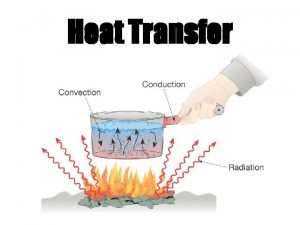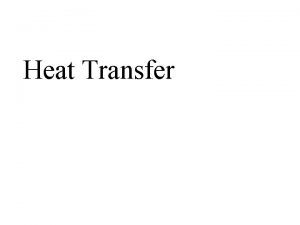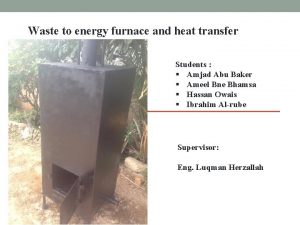Analysis of Radiation Heat Transfer in Furnace P













- Slides: 13

Analysis of Radiation Heat Transfer in Furnace P M V Subbarao Professor Mechanical Engineering Department Test for Cooling Capacity of Furnace Surface….

Complexity of Gas-Wall Radiation Process

Governing equation in a gas radiation • For gas radiation governing differential equation is known as Radiative Transfer Equation (RTE) • The RTE for an absorbing, emitting, gray medium is Face 1 Face 5 n North • Classification: Ø Basic models and their determinants Ø Based on quadrature set Ø Complex geometry of the furnace Face 4 y w Face 3 η μ West x e z s ξ South Face 6 East Face 2 L W H

Basic models for RTE in gas radiation RTE Optically Thin Directional Averaging 2 -Flux 4 -Flux Multiflux DOM Self-absorbing Differential Approximation Moment Modified. Moment PN - Approx. Optically Thick Energy Hybrid Zone MCM Numerical (FD, FV) DTM Ray Tracing Radiation Element

Radiation inside furnace • Types of radiation: Surface and volumetric radiation • Characterization of participating media: usually, the radiant energy is scattered, absorbed and emitted by tiny suspended particles or gases like CO 2 and water vapor, such media are called participating media. • Gas radiation involved • Absorption: attenuation of intensity absorption coefficient • Emission: augmentation of intensity emission coefficient • Scattering scattering coefficient • Radiant heat transfer occur from the source (Flame) to sink (water walls) in a furnace

Gas radiation-Governing equation Assumptions: Face 1 Ø All six boundaries are diffuse and gray Ø Absorbing, emitting, non scattering gray medium Face 5 n North Face 4 Ø Same absorption coefficient at all points y w Face 3 η μ West x e z s ξ South Ø Thermophysical properties e. g. density, specific heat, thermal conductivity and optical property like extinction coefficient are constant. Ø Absorption coefficient = emission coefficient Governing equation for participating media (RTE): Face 6 East W Face 2 L Co-ordinate system for cubic enclosure Where; S is line of sight distance in the direction of propagation of the radiant intensity I H

Direction cosine in 2 D geometry RTE with consideration of direction cosine Where Im radiation intensity

Boundary condition At x = 0; At x = L;

DOM with heat generation Incident irradiation at the center of each cell containing only gas Flame cell Temperature inside the flame cell (Heat generation per unit volume)

Solution of RTE • The exact (analytical or numerical) solution of integrodifferential radiative transfer equation (RTE) is generally a formidable task. • Although there have been a few attempts to formulate RTE for non-isothermal rectangular enclosures. • Explicit solutions are only available for simplified situations such as black walls and constant properties etc. • There is growing interest in approximate solutions for furnace design and analysis. • The exact solutions even for these simplest systems are used to serve as benchmarks against which the accuracy of approximate solutions is tested.

Radiation heat transferred to furnace wall • Radiation heat transfer • Where eeff is the emissivity of flame and water wall system. • Emissivity of PC flame • S : Effective thickness of radiant (flame) layer. V is the volume of the gas and A is the enclosing surface area

• K is the coefficient of radiant absorption • • • Volume fraction of RO 2 & H 2 O : r. RO 2 & r. H 2 O c 1 : 1. 0 for coal and 0. 5 for wood c 2 : 0. 1 for PC flame, 0. 03 for Stoker flame. mh : Concentration of ash particles dh : diameter of ash particles : 13 mm for PC & 20 mm for stoker.

Thermal Efficiency Factor, y • If clean water wall is a perfect black body all radiation falling on it will be absorbed. • Fouling (x)leads to drop in emissivity of the wall. • Water walls consists of tubes which generate an angular coefficient, x. • Angular coefficient varies with the location of water wall. • Thermal efficiency factor is defined as the fraction of incident radiation absorbed by the tubes: • The average thermal efficiency factor is calculated as
 Example of heat transfer by radiation
Example of heat transfer by radiation How does heat move
How does heat move Types of heat transfer
Types of heat transfer What is heat transfer conduction convection and radiation
What is heat transfer conduction convection and radiation Radiation examples pictures
Radiation examples pictures Does heat radiation travel in straight lines
Does heat radiation travel in straight lines Fundamental of heat and mass transfer
Fundamental of heat and mass transfer Radiation heat transfer coefficient
Radiation heat transfer coefficient Which is the best surface for reflecting heat radiation
Which is the best surface for reflecting heat radiation Radiation examples
Radiation examples What is radiation
What is radiation Radiation examples heat transfer
Radiation examples heat transfer Conduction
Conduction 5'0 in cm
5'0 in cm
